
|
| by Lee Juvan |
Worsted Yarns + Worsted Spinning Spinners who began their fiber journey as knitters sometimes find the term worsted confusing. For knitters, worsted generally refers to a medium-weight yarn that measures approximately 11-13 wraps per inch and yields a gauge somewhere between 4 and 5 stitches per inch. For spinners, worsted refers to a yarn spun from parallel fibers that have been combed (not carded) to remove shorter bits and spun with a short draw to keep the fibers in their parallel alignment. Thus, a worsted-weight knitting yarn may, or may not be, worsted spun, and a worsted-spun yarn can be lace weight or chunky. The term worsted is also used by spinners to describe the technique for creating this type of yarn. (The short draw itself is sometimes called a worsted draw.) True worsted yarn must be spun from combed top (for Abby Franquemont’s detailed definitions of top, roving, sliver, rolags, and more, look here). 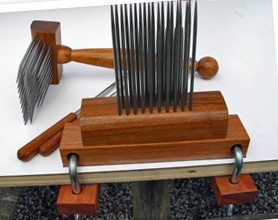 Most discussions of worsted spinning focus on the fiber
preparation, since combing
is essential. Wool combs are
more exotic than the hand-
and drumcarders that most spinners
end up owning, and their use
is a bit more difficult (and
dangerous) to master, given
their relative rarity. 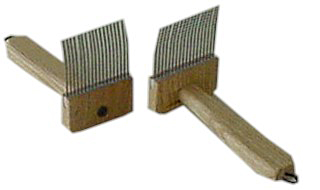 Why would anyone want to experiment with worsted spinning? Worsted-spun yarns tend to be dense, compact, and give good stitch definition. Fabrics from worsted-spun yarns are known for their durability, sheen, and drape, and tend to pill a bit less than those from woolen-spun yarns (although this last quality depends on a whole variety of factors, including the fibers used). Worsted-spun yarn may be just the ticket for the heirloom cabled sweater you’ve been planning, and it is ideal for long-wearing handspun socks. Slippery non-wool fibers such as silk, bamboo, and flax are also usually spun worsted style to maximize the natural qualities of strength, shine, and drape inherent in these fibers. Because hand-combing your own wool top requires specialized equipment, most of us end up experimenting with worsted spinning techniques on machine-prepared top. Combed top is widely available commercially, and chances are, if you’ve been buying fiber at festivals, you probably have some in your stash. And top doesn’t have to be just wool—it can include blends of any fiber, plant or animal. 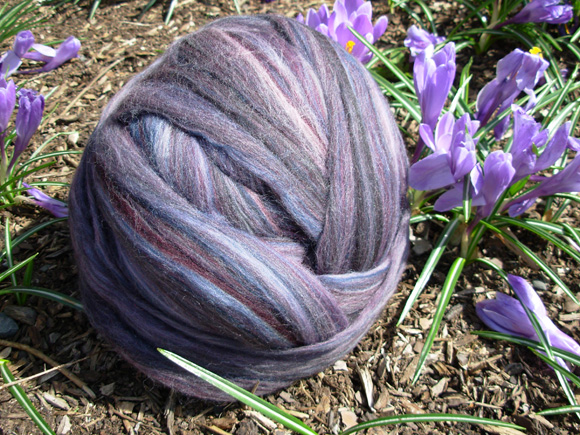 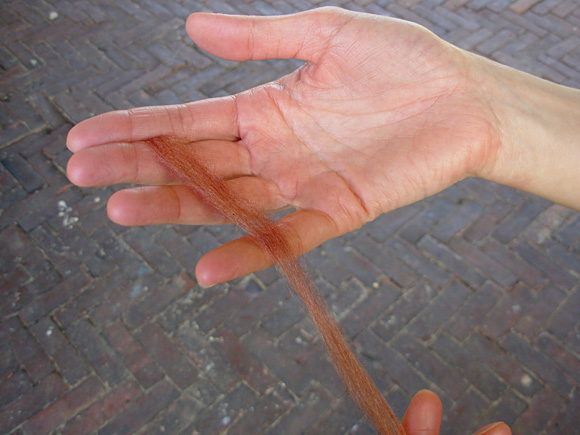 I’ll call the hand closer to the orifice the front hand; the hand holding the fiber supply, the back hand. Your front hand pulls the fiber forward while the back hand controls the size of the drafting triangle (and the amount of fiber drafted). The twist should not be allowed to enter the drafting zone; the front hand should slowly move toward your body, allowing the twist to follow it back, smoothing the fibers as it goes. You want to keep your front and back hands close together during the drafting process (about an inch and a half, or half the staple length) and let the twist enter the fiber so that the alignment stays as parallel as possible. The yarn that heads into the orifice will be smooth and dense. Of course, different spinning mentors explain the motions with some variation. It’s always a wise idea to read what a number of authors say and then find your own style by practicing and experimenting. 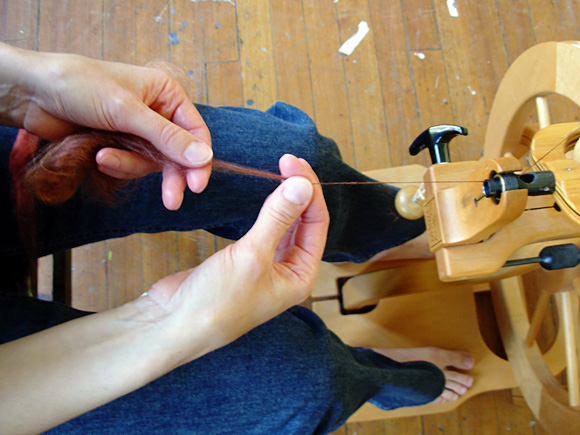 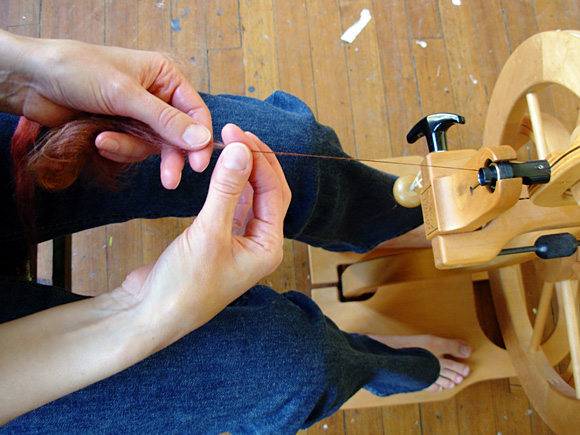 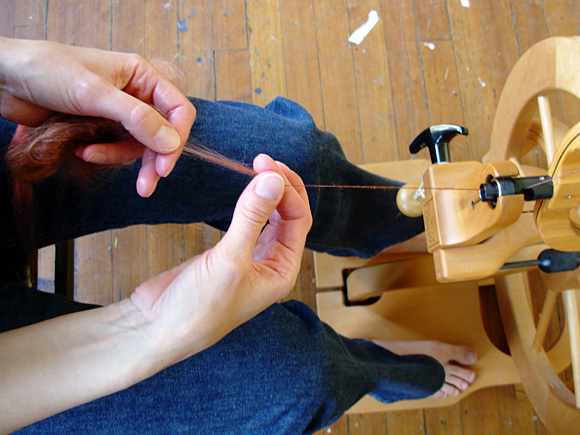 Understanding the concept of worsted spinning gives you another tool in your spinner’s box of tricks—ready for you to adapt as you wish. |
| ABOUT THE AUTHOR |
 |
| Text © 2009 Lee Juvan; Images © 2009 Lee and Tom Juvan. Thanks to woolcombs.com for use of their woolcomb image; Louet for the image of their minicombs. Contact Lee |
